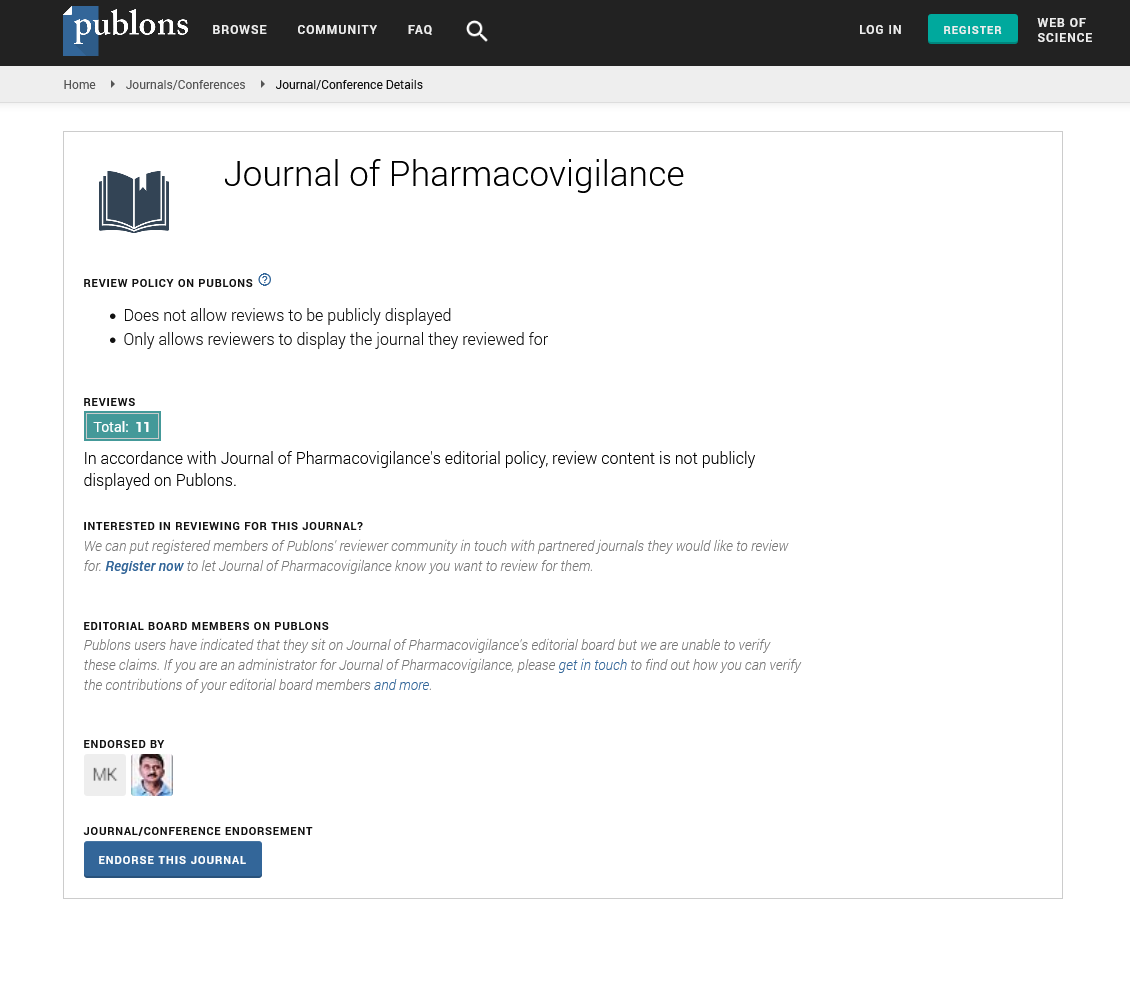Indexed In
- Open J Gate
- JournalTOCs
- The Global Impact Factor (GIF)
- RefSeek
- Hamdard University
- EBSCO A-Z
- OCLC- WorldCat
- Publons
- Euro Pub
- Google Scholar
Useful Links
Share This Page
Journal Flyer

Open Access Journals
- Agri and Aquaculture
- Biochemistry
- Bioinformatics & Systems Biology
- Business & Management
- Chemistry
- Clinical Sciences
- Engineering
- Food & Nutrition
- General Science
- Genetics & Molecular Biology
- Immunology & Microbiology
- Medical Sciences
- Neuroscience & Psychology
- Nursing & Health Care
- Pharmaceutical Sciences
Hydroxychloroquine in patients with inflammatory and erosive Osteoarthritis of the hands (OA TREAT): Study protocol for an ongoing randomized controlled trial
4th International Conference and Exhibition on Pharmacovigilance & Clinical Trials
August 10-12, 2015 London, UK
Pascal Klaus, Jacqueline Detert, Joachim Listing, Vera Höhne-Zimmer, Tanja Braun, Siegfried Wassenberg, Rolf Rau, Frank Buttgereit and Gerd R Burmester
Scientific Tracks Abstracts: J Pharmacovigilance
Abstract:
Background: Osteoarthritis (OA) is a heterogeneous group of conditions with disturbed integrity of articular cartilage and changes in the underlying bone. The pathogenesis of OA is multifactorial and not just a disease of older people. Hydroxychloroquine (HCQ) is a Disease-Modifying Anti-Rheumatic Drug (DMARD) typically used for the treatment of various rheumatic and dermatologic diseases. Despite initial evidence for good efficacy of HCQ, there has been no randomized, double-blind, and placebo-controlled trial in a larger patient group. Methods/Design: OA TREAT is an investigator-initiated, multi-center, randomized, double-blind, placebo-controlled trial. A total of 510 subjects with inflammatory and erosive hand OA, according to the classification criteria of the American College of Rheumatology (ACR) with recent X-ray, will be recruited across outpatient sites, hospitals and universities in Germany. Patients are randomized 1:1 to active treatment (HCQ 200-400 mg per day) or placebo for 52 weeks. Both groups receive standard therapy (Non- Steroidal Anti-Inflammatory Drugs [NSAID], coxibs) for OA treatment, taken steadily two weeks before enrolment and continued further afterwards. If disease activity increases, the dose of NSAID/coxibs can be increased according to the drug recommendation. The co-primary clinical end-points are the changes in Australian-Canadian OA Index (AUSCAN, German version) dimensions for pain and hand disability at week 52. The co-primary radiographic end-point is the radiographic progression from baseline to week 52. A multiple end-point test and analysis of covariance will be used to compare changes between groups. All analyses will be conducted on an intention-to-treat basis. Discussion: The trial OA TREAT will examine the clinical and radiological efficacy and safety of HCQ as a treatment option for inflammatory and erosive OA over 12 months. OA TREAT focuses on erosive hand OA in contrast to other current studies on symptomatic hand OA, for example, HERO [Trials 14:64, 2013].
Biography :
Pascal Klaus, gratuated from Charite - Universitatsmedizin Berlin, Germany, in 2011. He is currently an intern and scientific associate at the Department of Rheumatology and Clinical Immunology at Charite - Universitätsmedizin Berlin (director: Prof. G.-R. Burmester). There, he is pharmacovigilance assignee for INSIDER, the division for investigator-initiated trials in rheumatology, led by J. Detert, MD.

